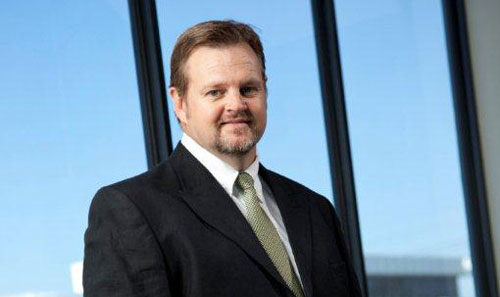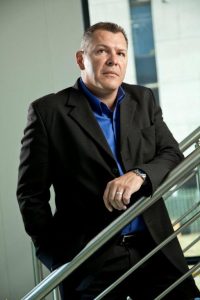
Independent data centre operator Teraco is expanding its facilities in Johannesburg and Cape Town and building a new centre in Durban as demand in the SA market explodes. But it’s having to focus enormous energy on increasing power efficiencies at all the sites in order to try to combat the effects of fast-rising electricity tariffs.
Teraco MD Lex van Wyk says companies have been hard hit by the latest electricity increases and “this will only worsen”.
“We’re taking every step in managing our facilities better so that our clients are not affected as seriously as they could be,” he says. “It’s quite a tightrope act to balance power and cooling, maximising performance versus lowering costs. Through careful engineering, we’re trying to do both.”
Teraco employs many “green” alternatives, such as switching off condensers and using “free” cool air from outside its facilities when the temperature drops below 21 degrees.
“Cooling and power are the most important aspects in Teraco’s business to ensure we stay price competitive and manage our facilities in a way that keeps us economical,” Van Wyk says. “As such, we’ve incorporated these aspects into the heart of our business model, rather than trying to chase efficiencies after the fact.”
Each facility includes two separate uninterruptible power supply (UPS) and generator systems in case of disruptions to the electricity supply from the grid. The new and expanded centres will include more efficient systems. For example, rather than cooling entire server rooms, Teraco plans to cool only occupied racks.

Teraco supplies data centre services for all of the major telecommunications operators in SA and many Internet service providers. It also offers “private cloud services” for a number of financial institutions and corporate clients and connects in to Seacom’s submarine fibre network along Africa’s east coast. It hopes to link to all of the undersea cables that land in SA in due course.
The UPS rooms at Teraco’s largest facility in Isando, east of Johannesburg, include climate monitoring, air conditioning and moisture and fire sensors. The rooms that house the servers are similarly closely watched.
“Each server cabinet and rack is power-monitored and we have a [Web] portal so customers can monitor their own racks should they wish to,” says Grant Orchard, data centre manager at the Isando facility. “Our systems record any spikes in temperature or power usage and provide instant notifications which customers can also access remotely. This makes it possible for clients to reboot their servers remotely should they need to do so”.
Teraco is a “vendor-neutral” provider, so it isn’t limited to a single brand for any aspect of its infrastructure. It also means that when upgrades occur Teraco can opt for new, more efficient technologies that need not match existing systems.
Each centre is designed to be dynamically expandable, depending on demand, and much of the new space Teraco is building will begin as simply a shell. Server rooms will be built, but the actual servers will only be installed as required. This allows the company to track forecasted growth and plan accordingly, reducing costs and unnecessary outlay in the process.
“The new centres use the same technology, but include efficiency strategies we’ve learnt to date,” says Gys Geyser, Teraco’s head of operations. “The air conditioning no longer runs at full capacity, cooling specific server racks rather than whole rooms instead. Similarly, the lights in the data centres are only turned on when necessary.”
Geyser says the data centres in Cape Town and Durban are being built in phases so that they can be expanded as necessary, alleviating the problem of building infrastructure that may, at first, be underutilised.
Van Wyk says Teraco wants to expand its operations to other African countries, particularly Nigeria and Kenya. “We’re investigating Nigeria, but the challenge there is unreliable power supply. Many areas, even in major cities, rely on diesel generators. For every R1/kW we pay here, it costs about R4 there.”
He says Kenya’s east cost is particularly attractive because of new undersea cables expected to land there later this year.
But Van Wyk says Teraco’s focus remains on SA for now. “SA is a growing economy with lots of potential, hence our expansion here. More fibre is coming in from overseas, and to connect this to existing infrastructure requires central connection spaces that, along with the growth of cloud services, is driving the data centre market.” — Craig Wilson, TechCentral
- Subscribe to our free daily newsletter
- Follow us on Twitter or on Facebook




